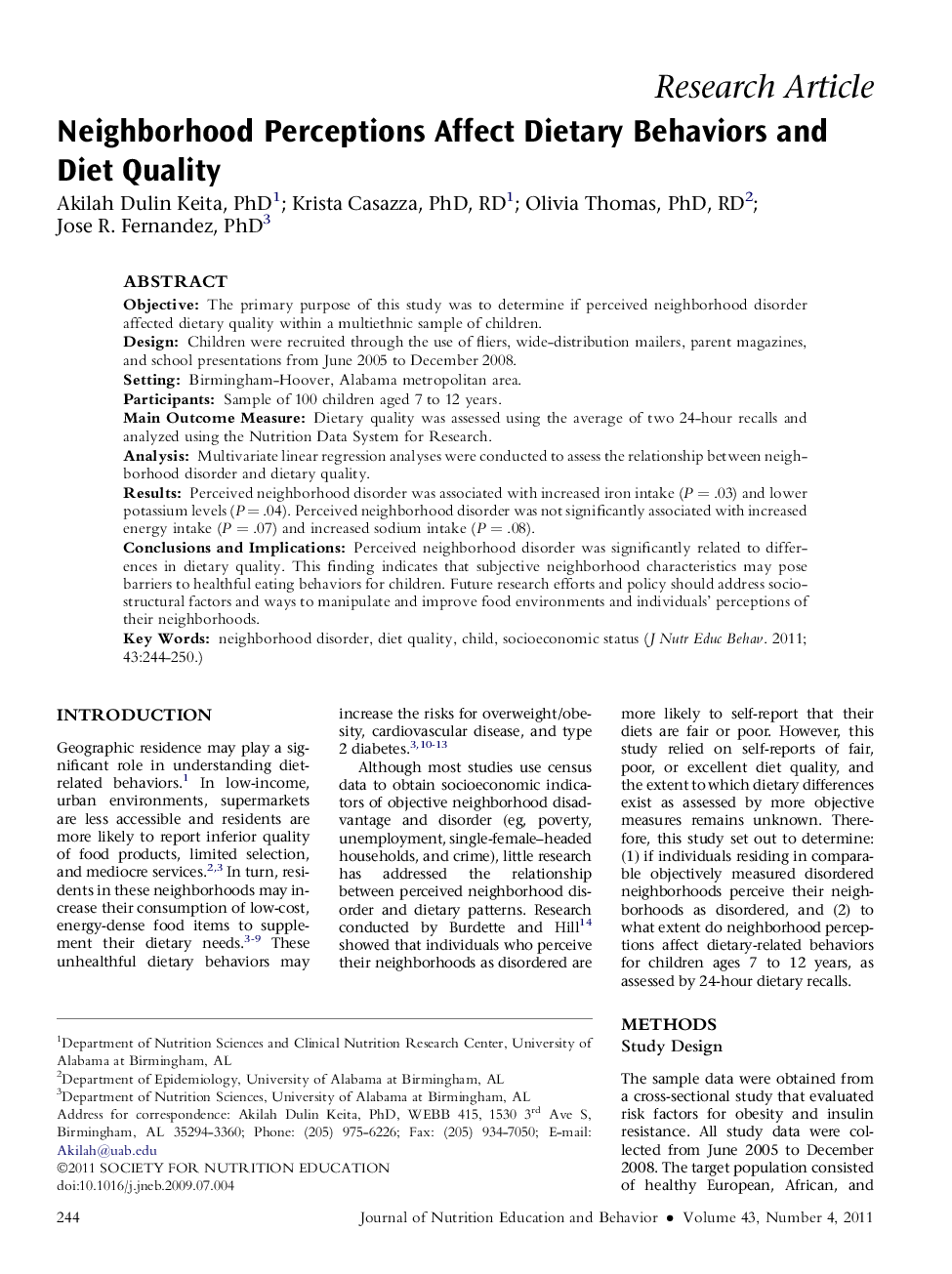| Article ID | Journal | Published Year | Pages | File Type |
|---|---|---|---|---|
| 362235 | Journal of Nutrition Education and Behavior | 2011 | 7 Pages |
ObjectiveThe primary purpose of this study was to determine if perceived neighborhood disorder affected dietary quality within a multiethnic sample of children.DesignChildren were recruited through the use of fliers, wide-distribution mailers, parent magazines, and school presentations from June 2005 to December 2008.SettingBirmingham-Hoover, Alabama metropolitan area.ParticipantsSample of 100 children aged 7 to 12 years.Main Outcome MeasureDietary quality was assessed using the average of two 24-hour recalls and analyzed using the Nutrition Data System for Research.AnalysisMultivariate linear regression analyses were conducted to assess the relationship between neighborhood disorder and dietary quality.ResultsPerceived neighborhood disorder was associated with increased iron intake (P = .03) and lower potassium levels (P = .04). Perceived neighborhood disorder was not significantly associated with increased energy intake (P = .07) and increased sodium intake (P = .08).Conclusions and ImplicationsPerceived neighborhood disorder was significantly related to differences in dietary quality. This finding indicates that subjective neighborhood characteristics may pose barriers to healthful eating behaviors for children. Future research efforts and policy should address sociostructural factors and ways to manipulate and improve food environments and individuals' perceptions of their neighborhoods.
